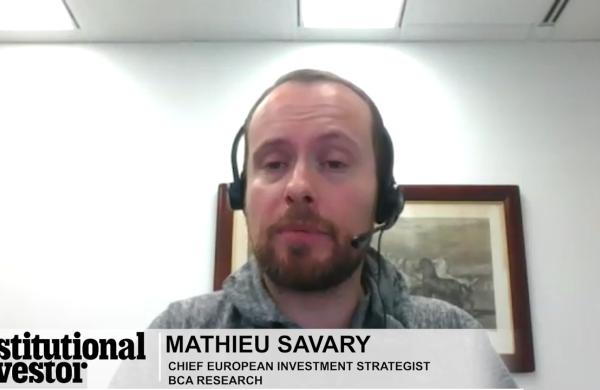No 401(k) plan of respectable size would dream of restricting its participants to the investment options of just one money management firm. Yet that’s what typically happens with target-date funds. In the vast majority of 401(k) plans, the target-date choices all come from a single mutual fund family. But that’s beginning to change. According to Hewitt Associates, a Lincolnshire, Illinois–based firm specializing in human resources consulting, more than 20 percent of large and midsize 401(k) plans and nearly 10 percent of all such plans use some form of open architecture: Participants get to invest in target-date funds from outside vendors. At investment consulting firm Segal Advisors in New York, vice president Gino Reina says, "We’re talking about it with all of our clients."
This change comes as target-date funds, which adjust their asset allocations according to when investors expect to retire, are zooming in popularity. That is despite their generally disastrous returns last year and a slew of hearings into their labeling, fees and returns by the U.S. Securities and Exchange Commission, the Department of Labor and Congress. Cerulli Associates, a Boston-based research firm, estimates that $276 billion will be held in the funds this year, more than double the $114 billion of three years ago. One reason for the popularity: The Pension Protection Act of 2006 permits target-date funds to be the default choice when employees enroll in plans.
The trend toward open architecture follows closely on the heels of target-date funds’ lousy performance in 2008. The presumably risk-averse funds turned out to be far more heavily weighted in equities than investors had thought. "After last year’s results people are thinking this is a good time to rethink product design," says Matthew Gannon, director of defined contribution investments at Boston-based MFS Investment Management. Open architecture has obvious appeal. "We think there are different managers that are best in different classes," explains Stuart O’Dell, director of retirement investments at computer chip maker Intel Corp., which uses open architecture for all $360 million of its target-date money. "We would like the flexibility to have the best in breed wherever we’re allocating capital."
Open architecture comes in three main varieties: additional, prepackaged and customized. In the classic "additional" form, a recordkeeper allows competitors to pitch their products to its target-date clients, alongside the recordkeeper’s own funds.
To create the prepackaged version, a recordkeeper or money manager picks what it considers to be the best purveyors of each asset class. All the assets in a given class are handled by the chosen manager. However, the percentage of a fund’s assets that the manager receives will depend on the asset allocation, or "glide path," of the particular target-date fund. A 2010 fund, for employees retiring next year, would be heavier on bonds than a 2025 fund. Customized target-date funds, by contrast, are separate accounts with a glide path created for each plan sponsor based on factors unique to that plan, such as its employee demographics. The administrators of these funds try to use managers that are already in the 401(k) lineup, although they may hire outside specialists.
For plan sponsors open architecture can save money, because the prepackaged and customized versions usually use lower-cost institutional funds. Sometimes the plan sponsors even select managers through competitive bidding. Those tactics more than make up for any extra setup costs, proponents say. Fixed-income powerhouse Pacific Investment Management Co., in Newport Beach, California, calculates that a customized fund can cost from 20 to 65 percent less to set up and run than buying a prepackaged version. For consultants, insurance companies, money managers and smaller recordkeepers that have had to make do with only a piece of the target-date market, open architecture enables them to compete in a business dominated by giants like Fidelity Investments, Vanguard Group and T. Rowe Price.
Cynics, though, may wonder about potential conflicts of interest: A recordkeeper could create a glide path that just happened to require a huge allocation to an asset class in which it had great performance. In the fall of 2008, when the Missouri State Employees’ Retirement System hired AllianceBernstein to build it a customized glide path, the firm urged Mosers to use some of its funds, according to people from both sides. However, Cindy Rehmeier, manager of deferred compensation at Mosers, says AllianceBernstein backed off after she contended that its fees weren’t competitive. Thomas Fontaine, AllianceBernstein’s head of defined contributions, replies: "We wouldn’t view that as rejection. We would make our money by doing the design of the glide path, as well as the implementation." Other managers say clients avoid such conflicts by bringing in consultants or other third parties to pick funds.
But if the appeal of open architecture for a firm like AllianceBernstein — which doesn’t do recordkeeping — is obvious, why would a big recordkeeper want to share its captive client base? Indeed, claims John Ameriks, head of investment counseling and research at Vanguard, open architecture would be bad for his plan sponsors as bringing in outside funds would disrupt the strategies of his firm’s ten mostly indexed target-date funds. "Adding active management to an index lineup adds manager risk," he explains. Another negative: The customized version can seem like too much hassle or fiduciary risk.
Still, the doors are clearly cracking open. MassMutual Financial Group now offers target-date fund families from three outside firms to its recordkeeping clients — and it lets clients use other outside managers on request — despite having its own proprietary funds.
Fidelity does allow clients to use outside target-date products, because it permits open architecture for all 401(k) investments. However, only a small amount of its target-date assets are managed by other providers — the company wouldn’t reveal how much — and a spokesman says customized funds are "rare or nonexistent." When clients do go outside, Segal’s Reina says, Fidelity hikes its recordkeeping fees — although the spokesman disputes this.
"Of course your preference is for the client to use your own product," notes Stacy Schaus, Pimco’s defined contribution practice leader. "But that doesn’t mean you’re going to say, ‘No, I’m not going to help you do what you want to do, Plan Sponsor.’ If they don’t help, their clients are going to go get a different recordkeeper."






